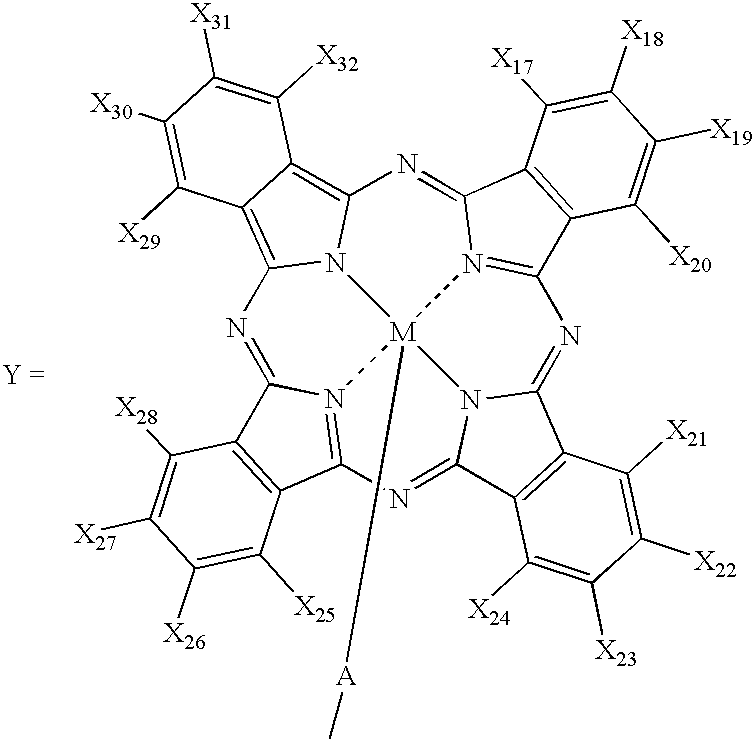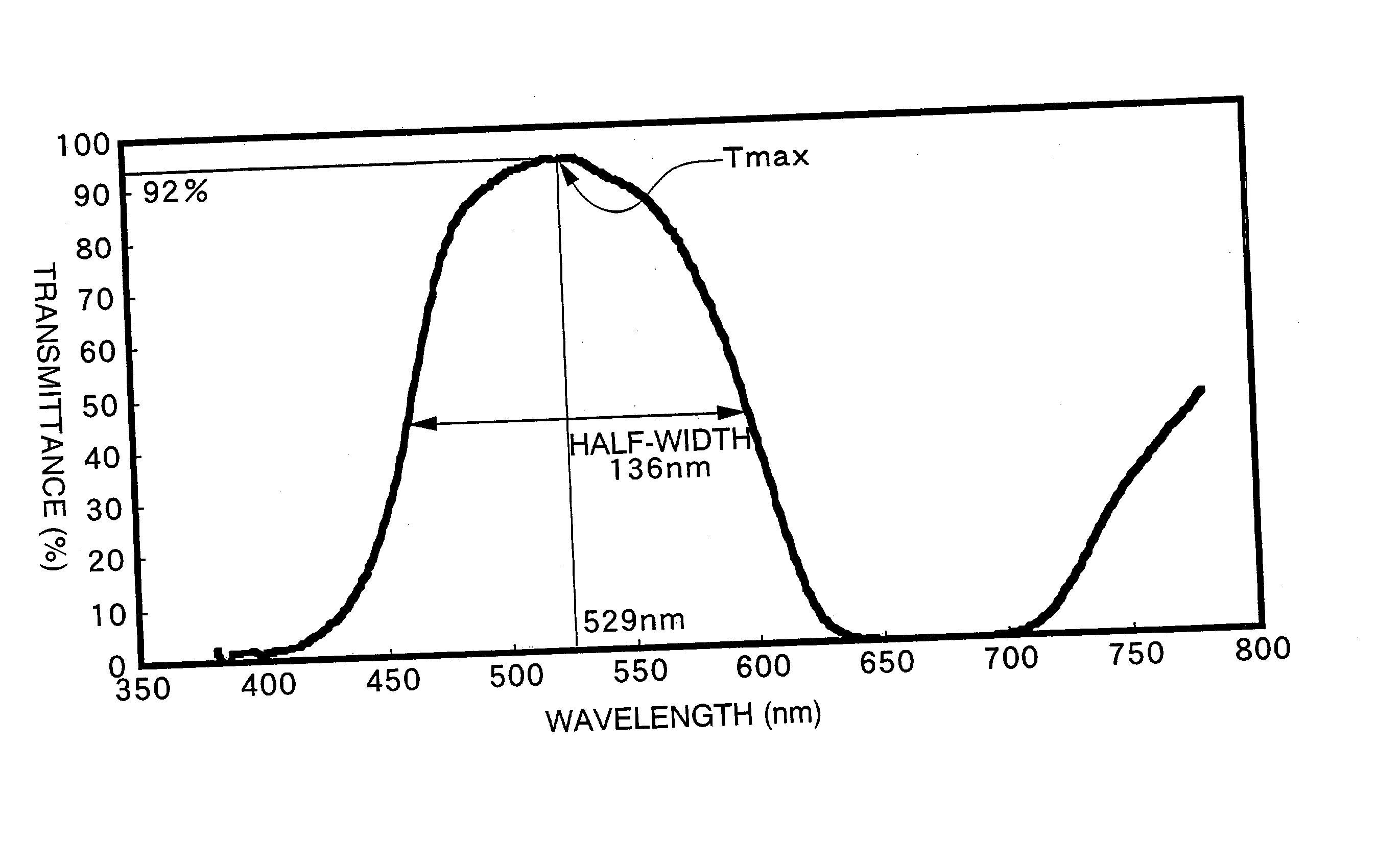Color filter
a color filter and filter body technology, applied in the field of color filters, can solve the problems of poor light resistance and color hue fading during use over long periods, and the inability to achieve the desired chromaticity or color hue in the pixel portions, and achieve the effect of stronger yellowish tinge and more durabl
- Summary
- Abstract
- Description
- Claims
- Application Information
AI Technical Summary
Benefits of technology
Problems solved by technology
Method used
Image
Examples
preparation example 1
[0107] Using phthalic anhydride, urea, and aluminum chloride as raw materials, chloroaluminum phthalocyanine was prepared. A 1-chloronaphthalene solution of the chloroaluminum phthalocyanine exhibited an absorption of light at a wavelength within a range from 650 to 750 nm.
[0108] As a halogenating agent, a mixture was prepared by mixing 3.2 parts of thionyl chloride, 3.8 parts of anhydrous aluminum chloride, and 0.5 parts of sodium chloride at 40.degree. C. and adding dropwise 2.7 parts of bromine. To the mixture, 1 part of chloroaluminum phthalocyanine was added, and the reaction was conducted at 90.degree. C. for 15 hours. After the completion of the reaction, the reaction mixture was poured into water to deposit a crude halogenated chloroaluminum phthalocyanine pigment. The aqueous slurry was collected by filtration, washed, in order, with hot water at 60.degree. C., 1% sodium hydrogensulfate water, and hot water at 60.degree. C., and then dried at 90.degree. C. to obtain 2.7 par...
preparation example 2
[0111] Using phthalic anhydride, urea, and vanadium pentoxide as raw materials, oxyvanadium phthalocyanine was prepared. A 1-chloronaphthalene solution of the oxyvanadium phthalocyanine exhibited an absorption of light at a wavelength within a range from 650 to 750 nm.
[0112] As a halogenating agent, a mixture was prepared by mixing 3.1 parts of thionyl chloride, 3.7 parts of anhydrous aluminum chloride, and 0.5 parts of sodium chloride at 40.degree. C. and adding dropwise 2.6 parts of bromine. To the mixture, 1 part of oxyvanadium phthalocyanine was added, and the reaction was conducted at 90.degree. C. for 15 hours. After the completion of the reaction, the reaction mixture was poured into water to deposit a crude halogenated oxyvanadium phthalocyanine pigment. The aqueous slurry was collected by filtration, washed, in order, with hot water at 60.degree. C., 1% sodium hydrogensulfate water, acetone containing 7% toluene, and hot water at 60.degree. C., and then dried at 90.degree. ...
preparation example 3
[0115] Using phthalodinitrile and zinc chloride as raw materials, zinc phthalocyanine was prepared. A 1-chloronaphthalene solution of the zinc phthalocyanine exhibited an absorption of light at a wavelength within a range from 650 to 750 nm.
[0116] As a halogenating agent, a mixture was prepared by mixing 3.1 parts of thionyl chloride, 3.7 parts of anhydrous aluminum chloride, and 0.5 parts of sodium chloride at 40.degree. C. and adding dropwise 2.6 parts of bromine. To the mixture, 1 part of zinc phthalocyanine was added, and the reaction was conducted at 90.degree. C. for 15 hours. After the completion of the reaction, the reaction mixture was poured into water to deposit a crude halogenated zinc phthalocyanine pigment. The aqueous slurry was collected by filtration, washed, in order, with hot water at 60.degree. C., 1% sodium hydrogensulfate water, acetone containing 7% toluene, and hot water at 60.degree. C., and then dried at 90.degree. C. to obtain 2.6 parts of a purified crude...
PUM
 Login to View More
Login to View More Abstract
Description
Claims
Application Information
 Login to View More
Login to View More - R&D
- Intellectual Property
- Life Sciences
- Materials
- Tech Scout
- Unparalleled Data Quality
- Higher Quality Content
- 60% Fewer Hallucinations
Browse by: Latest US Patents, China's latest patents, Technical Efficacy Thesaurus, Application Domain, Technology Topic, Popular Technical Reports.
© 2025 PatSnap. All rights reserved.Legal|Privacy policy|Modern Slavery Act Transparency Statement|Sitemap|About US| Contact US: help@patsnap.com



